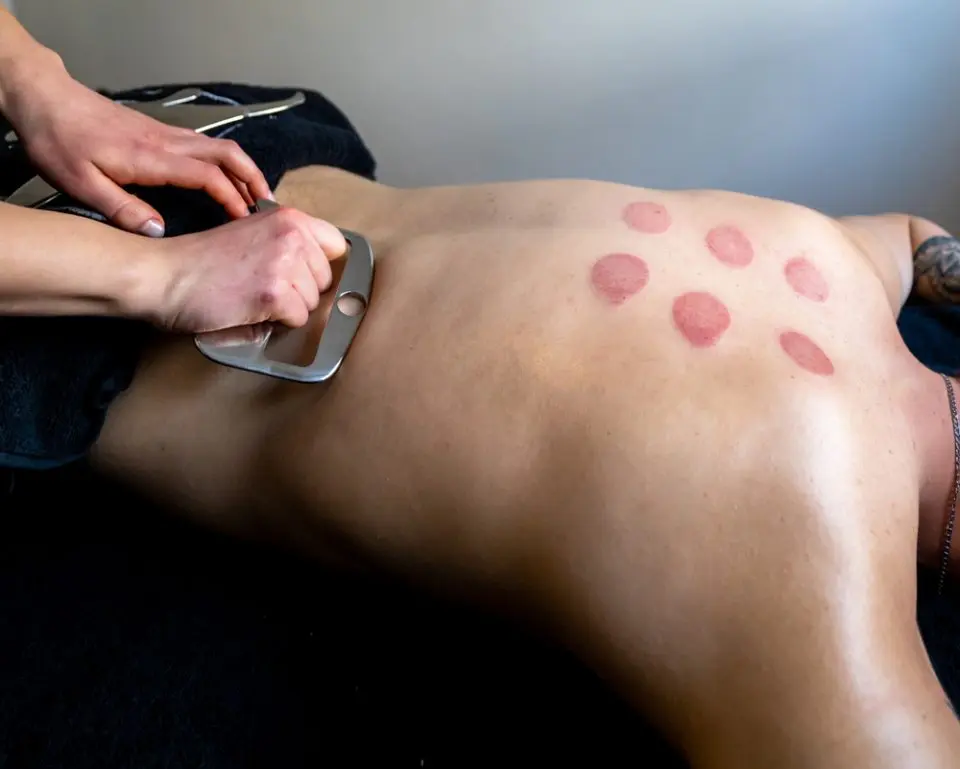Understanding the science and application of instrument-assisted soft tissue mobilization

Understanding muscle scraping
Muscle scraping, or instrument-assisted soft tissue mobilization (IASTM), is a therapeutic technique used to enhance muscle recovery, release tension, and improve mobility. It combines ancient practices with modern scientific understanding, offering a unique approach to muscle care.
Historical context
Muscle scraping’s roots can be traced back to ancient healing practices, where similar techniques were used to address muscle pain and improve circulation. Over time, these traditional methods have evolved into the modern technique of IASTM, which incorporates specialized tools for more precise application. The method’s rise in popularity is due to its clinical effectiveness and the increasing demand for alternative recovery solutions.
Basic principles
Muscle scraping relies on applying controlled pressure with a specialized tool to targeted areas of the body. The technique primarily focuses on soft tissue manipulation and fascial release, which helps increase blood flow and enhances circulation. The idea is to break down adhesions in the muscle tissue and fascia, allowing for improved mobility and faster recovery.
Scientific mechanisms
Muscle scraping isn’t just about feeling good—it has specific physiological effects that contribute to faster recovery and muscle health.
Physiological responses
When muscle scraping is performed, the pressure applied stimulates blood flow to the treated area. This increased circulation helps deliver oxygen and nutrients while removing metabolic waste from the muscles. Also, the manipulation of the fascia—the connective tissue surrounding muscles—helps release restrictions that may cause discomfort or stiffness.
Therapeutic effects
Muscle scraping is known to reduce inflammation, which can help with pain modulation and accelerate tissue repair. The technique is also effective in optimizing movement, allowing for greater flexibility and a more fluid range of motion. Many athletes incorporate muscle scraping into their routine for improved performance and faster recovery from intense training sessions.
Clinical benefits
Muscle scraping is widely used in sports and physical therapy settings for its therapeutic advantages.
Physical improvements
When done correctly, muscle scraping can increase mobility, reduce muscle tension, and enhance flexibility. By promoting healthy tissue regeneration and improving blood circulation, this technique aids in quicker recovery times, allowing athletes and fitness enthusiasts to return to their training regimens faster.
Therapeutic outcomes
The reduction of muscle pain and stiffness is a key benefit of muscle scraping. Regular use can lead to better muscle function, reduced discomfort, and overall improved performance. The technique’s effectiveness in reducing muscle soreness after workouts has made it a go-to method for many seeking a quicker recovery.
Comparative analysis
There are numerous recovery methods available, but muscle scraping offers unique advantages over other techniques.
Traditional techniques
Common recovery methods like manual massage, foam rolling, percussion therapy, and stretching all have their benefits. These techniques help relieve tension, increase flexibility, and promote recovery. However, muscle scraping stands out by offering targeted pressure with a tool that reaches deeper into muscle tissue, allowing for more specific treatment.
Muscle scraping advantages
What makes muscle scraping so effective is its ability to provide deep tissue access and deliver controlled pressure. The design of the tools used in muscle scraping allows therapists to target areas that may be difficult to reach with hands alone. This precise application enables better treatment outcomes and faster results compared to more generalized techniques.
Implementation guidelines
While muscle scraping can be highly effective, it’s important to follow certain guidelines to ensure proper application.
Treatment parameters
To achieve the best results, muscle scraping should be performed with the right amount of pressure, specific movement patterns, and appropriate session duration. The frequency of treatments depends on the individual’s recovery needs and goals, but it’s typically recommended to space sessions out to allow muscles to recover properly between treatments.
Tool selection
The tools used for muscle scraping are essential for the technique’s effectiveness. They vary in shape, size, and material, each offering unique benefits for different areas of the body. Selecting the right tool for the job is crucial for ensuring a safe and effective treatment.
Professional application
In a clinical setting, muscle scraping is typically performed by trained professionals. They follow specific protocols to assess the individual’s needs, monitor progress, and adjust treatments accordingly.
Assessment protocols
Before beginning any muscle scraping treatment, a thorough evaluation should be conducted. This includes assessing the individual’s injury history, current mobility, and progress over time. Treatment plans should be adjusted based on ongoing results to ensure optimal recovery.
Treatment progression
As the patient’s condition improves, the intensity and frequency of muscle scraping may be adjusted. This gradual progression helps maximize recovery while minimizing the risk of injury.
Safety considerations
While muscle scraping can be an excellent recovery tool, it’s important to follow safety guidelines to avoid complications.
Risk factors
Certain medical conditions, like acute injuries, skin conditions, or blood disorders, may make muscle scraping unsuitable. Always consult a healthcare professional before beginning any treatment, especially if you have underlying health conditions.
Application safety
Ensuring proper technique is critical to avoid injury. It’s important to use clean tools, apply controlled pressure, and listen to your body’s response during the treatment. Feedback from the client is crucial to ensure the right level of intensity and safety.
Self-treatment guidelines
For those interested in performing muscle scraping at home, it’s important to do so safely.
Tool selection
When choosing a tool for home use, ensure that it is the correct design and material for your needs. Quality matters—select tools that are durable and specifically designed for muscle scraping.
Application techniques
For beginners, start with lighter pressure and avoid excessive force. Focus on the main muscle groups, and always be cautious of tender areas. By following proper techniques and safety protocols, self-treatment can be effective in promoting recovery and improving muscle health.
Conclusion
Muscle scraping is a powerful recovery technique that can be used to enhance muscle health, reduce pain, and promote mobility. Whether performed by a professional or applied at home, it’s important to follow the correct methods and safety protocols to ensure maximum benefit. With the right approach, muscle scraping can play a key role in helping athletes and fitness enthusiasts achieve optimal performance and recovery.















